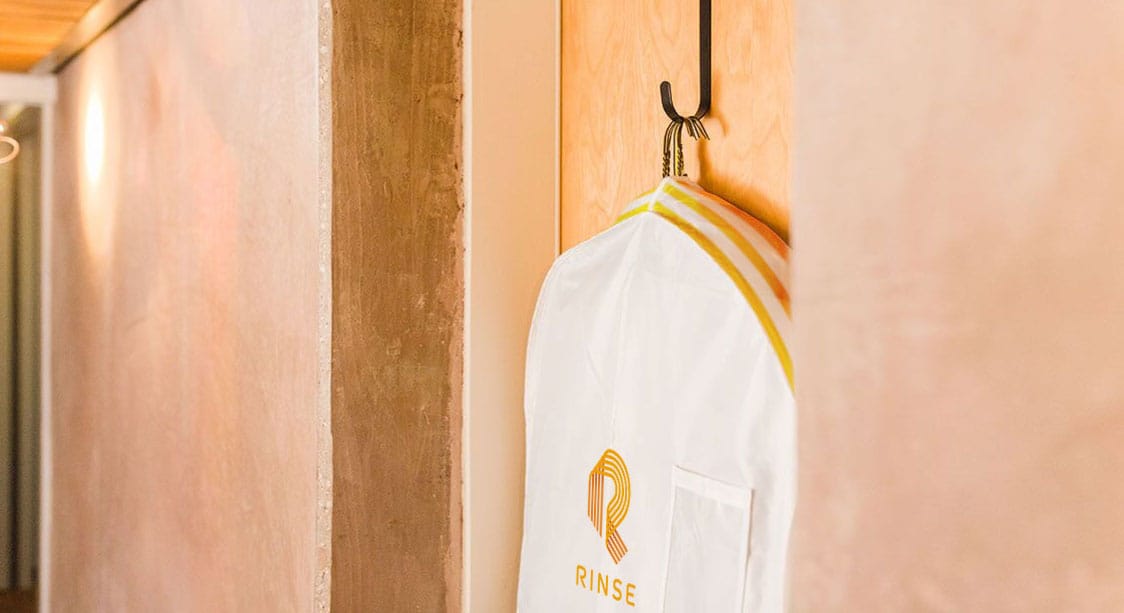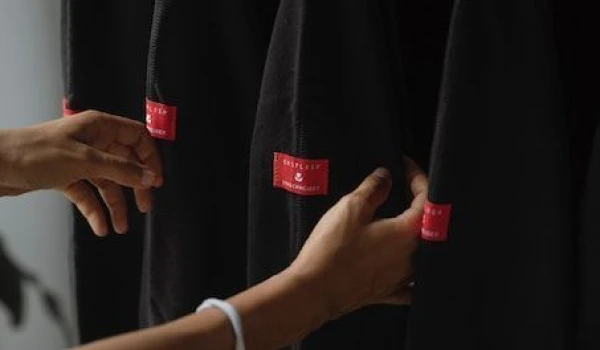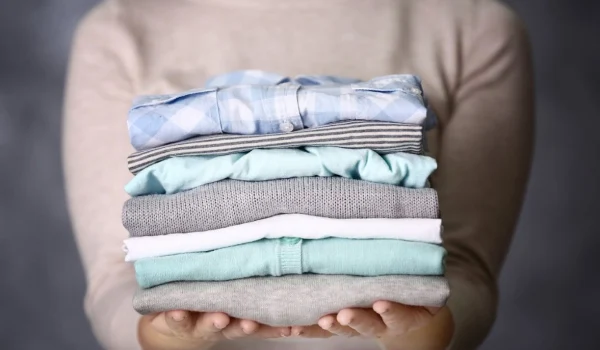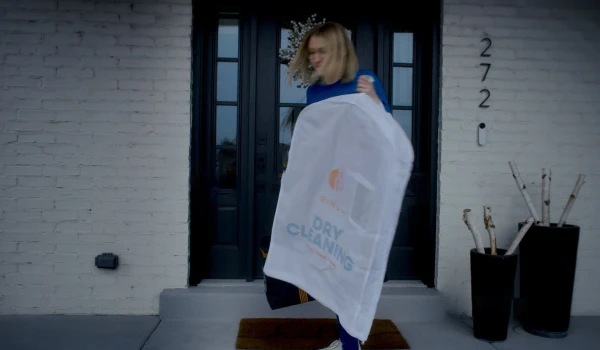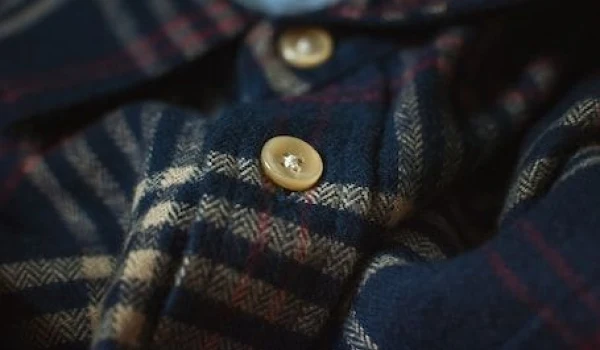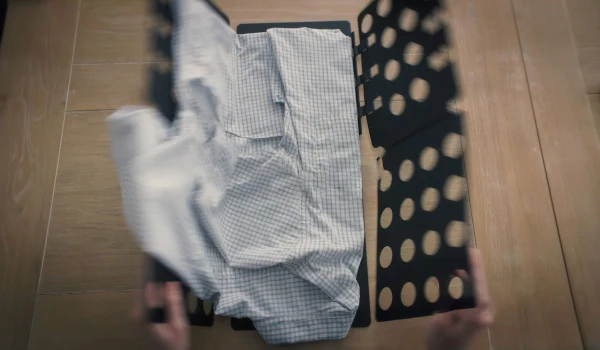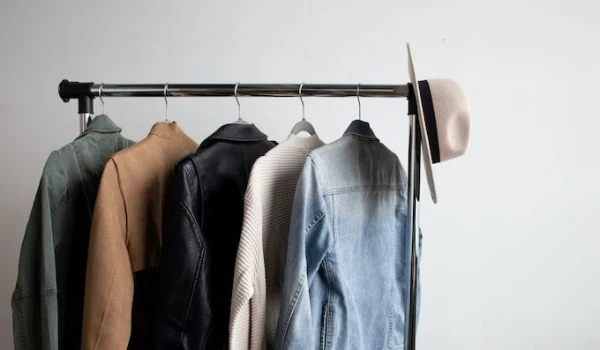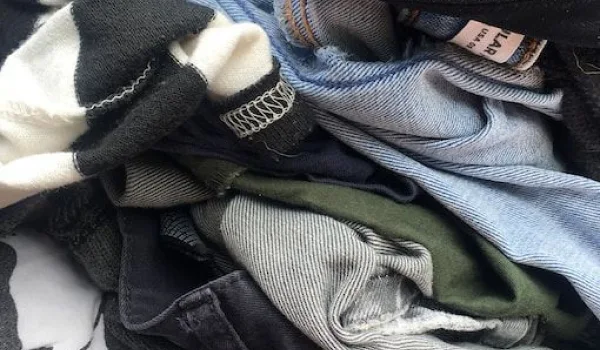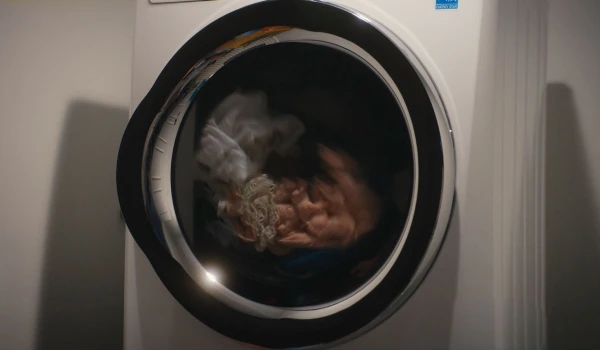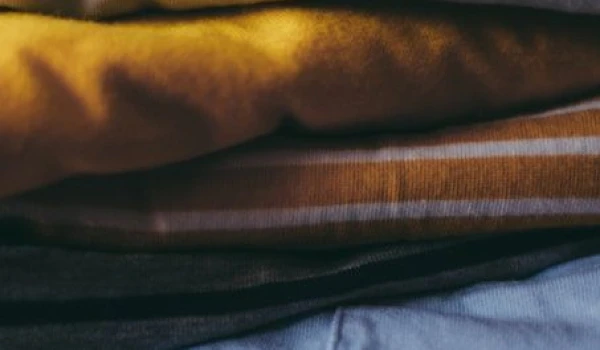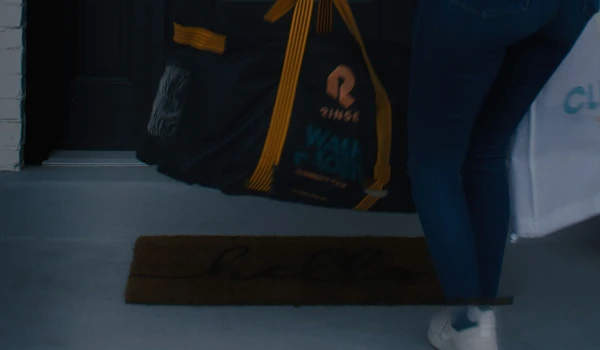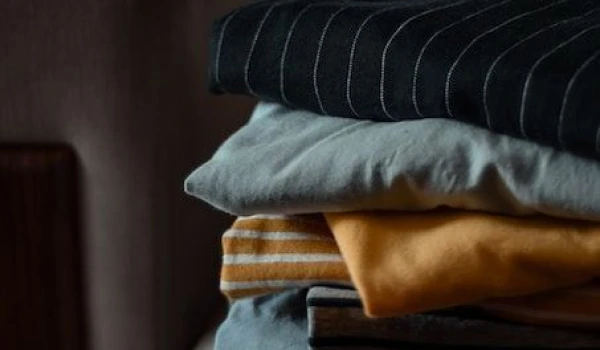Care
Clothing care tips to make your wardrobe last

Has the dry cleaning process always seemed a bit mysterious? You drop off dirty clothing and return to find your most prized pieces looking as good as new—but what really goes on in that magical place to prepare your wardrobe for the coming week? Most of us don't think about how our clothes get cleaned, but knowing the difference between dry cleaning and traditional laundry can help us better understand why certain items require different levels of care.

Our guide breaks down what's involved in the dry cleaning process so you can be assured that your clothes benefit from professional attention.
Dry cleaning uses solvents instead of water

Traditional laundry relies on water and detergent to clean clothing. Dry cleaning, on the other hand, is the industry standard of clothing care without the use of water. This specialized process uses chemical solvents to gently and effectively clean fabrics, such as silk, that can't be wet washed. Dry cleaning can also maintain the original texture, shape and color of garments, which might otherwise get damaged when tossed in the washing machine or hung to dry in the sun. After clothes are cleaned, they may go through a post-spotting stage to remove any remaining residue.
For insider tips on selecting the right professional cleaner, consult our guide on what to look for in a laundry and dry cleaning service.
Dry cleaning can tackle stubborn stains that can't be removed with water
Think of dry cleaning as laundry with benefits. A crucial difference between the two cleaning methods is a multi-step process called "pre-spotting"—a professional cleaner may apply a vacuum, steam and heat to prepare stains for cleaning. Not all stains are equal, so it's important that garments are pre-treated according to the type of stain and fabric to avoid more damage to the clothing. If heavy stains like mud or grease aren't properly treated with a stain remover before coming into contact with water, the traditional laundering process might inadvertently set the stain, making it more difficult to remove. As a result, dry cleaning can be an alternative care option for those hard-to-remove stains or inconvenient blemishes on your favorite pieces.
Dry cleaning is suited for sensitive fibers while wet wash methods work for durable materials

As a golden rule, delicate fabrics like silk and wool are best taken care of by dry cleaning. These fragile fibers can shrink or lose their shape when they come in contact with water. On the other hand, durable materials like cotton and polyester can be cleaned through traditional laundering methods without risking any changes.
It's important to note that there are exceptions to the rule. For example, cashmere can be either dry cleaned or hand washed with a gentle laundry soap. See our guide on which pieces can be dry cleaned for further detail.
Both dry cleaning and traditional laundry have their benefits. Understanding the differences between the two clothing care options can help you decide which of your clothes need a professional touch.
Photos: Peter Hershey, Alexxxey / Shutterstock.com, Michal Kulesza

Basic care: understanding how leather works
Part of a leather jacket's appeal is its versatility. It looks great on both men and women, and it works with various layers and textures. While leather complements most outfits, special care should be taken to ensure the fabric lasts since leather can't be cleaned with traditional laundry methods. Hang your leather apparel on wooden hangers in a cool, dry area to help the jacket maintain its shape, as folding may create creases. This also preserves the fabric's integrity and prevents any stretching that might occur.
Extra care: weatherproofing and stain removal

Dealing with the elements
Before wearing your new or vintage leather jacket out for weekend brunch or a night on the town, don't forget to weatherproof it. Lightly wipe the jacket with a damp cloth and finish off with a quick spritz of leather protectant to ensure your investment piece is ready for all weather conditions. This simple step also safeguards against any potential stains or spills, and it works for leather shoes and boots as well. Do a spot test before application by spraying a small section to check how the leather reacts to the product. If you don't see any discoloration or changes in texture, proceed to cover the entire piece. For best results, repeat this process at the start of each new season.
Taking care of minor stains
If you've had a little slip with your leather pants or jacket, keep calm and blot on. For a water-based stain, resist the temptation to reach for a blow dryer—let it air dry naturally instead. Ink and road salt stains can be common occurrences; rubbing alcohol will take care of the former, and saddle soap will help with any salt on your leather footwear. As always, test out a small area before covering a large area of the fabric with any given substance. If these methods fail to remove the stain, consider sending your pieces to a professional cleaning service. Seasonal care: cleaning and storage small area before covering a large area of the fabric with any given substance. If these methods fail to remove the stain, consider sending your pieces to a professional cleaning service.
Seasonal care: cleaning and storage
Professional cleaning over at-home care
There are always inherent risks to cleaning leather, so opt for professional care instead of the DIY route; you might be able to take care of some minor blemishes, but treating a stubborn oil-based stain yourself can lead to some damage of the material. While it may seem like an added cost, professional cleaning will save you money in the long run by preserving your clothing for a longer period of time. However, contrary to common misconception, leather can't be dry cleaned. The heat treatment will cause the fabric to lose its natural oils, which can lead to color bleeding or cracking in the material. That being said, your dry cleaner will most likely be able to outsource your garment to the best specialty cleaner in the city to ensure your attire receives the expert care it deserves.
Storing for the off-season
Invest in a leather conditioner to keep your pieces soft and supple between wears. Keep your jacket on a padded or wooden hanger—a wire hanger will bend and as a result, can stretch out the material. If you plan to keep your jacket in a bag, a cloth garment bag is preferable over a plastic one because the former will allow the leather to breathe. For any leather apparel you own, send it to a cleaner first to take care of stains and odors before storing it in a cool and dry spot, away from sunlight.
Leather requires extra attention to keep it looking its best, but that doesn't mean it has to be a painful process. By following our expert care tips, you'll keep your favorite leather pieces in great condition—without too much fuss.
Photos: pongsakorn prammaeklong / Shutterstock.com, London Scout, Greg Raines, Viktor Hanacek, Dương Trần Quốc

As hard as it might be to admit, the summer months are behind us. It's officially time to pull those practical fall layers out of storage and start adding them into your weekly wardrobe. Whether fall in your zip code calls for a blazer or a heavy-duty down jacket, it’s important to consider how you’re going to care for these seasonal outerwear pieces.
Trench and duster coats

For an effortless take on an established trend, you can opt for a relaxed fit in navy. Trench coats are often made out of machine-washable fabrics such as cotton, poplin, or polyester. Be sure to remove the lining and wash it separately from the shell. Use the delicate or handwash cycle, and avoid putting either piece in the dryer—especially if your coat is wool.
You can also prolong the life of your coats by weatherproofing them ahead of time. Some coats come weatherproofed but could stand to be retouched every few years. Weatherproofing comes in two forms: spray on and wash in. Choose the product that makes the most sense, clean your coat beforehand, and test on a small sample area first. When you're putting it away, store the coat on a sturdy hanger—not a hook—and away from sunlight to avoid any color damage.
If your coat is particularly structured or embellished, professional dry cleaning like Rinse (hint: we offer professional door-to-door Dry Cleaning services) will help ensure the fabric maintains its shape and is handled with care.
Wool coats and blazers

A structured wool coat or blazer makes the ideal finishing touch for an autumnal ensemble. Your coat should always be stored on a wooden hanger—not metal, which can leave a rust stain—in a breathable space to maintain the fabric's integrity and texture. If it's looking a little dull after a stint in your closet, smooth out any wrinkles with a steamer. A handy lint roller will take care of any stray particles so your coat looks fresh.
It might seem like a high-maintenance piece, but a trusted dry cleaner can streamline the cleaning process by removing any persistent stains and helping the coat or blazer keep its original shape. The sooner you act, the better the results. To prevent any damage from moths or insects attracted to undetectable odors, send the coat or blazer for professional cleaning at the start and end of each season.
Down jackets and parkas
The pièce-de-résistance of your cold weather arsenal is the down jacket or parka. Most parkas are designed with the consumer in mind. For instance, detachable linings or fur hoods are meant to be removed before washing. Keep your jacket out of a top-loading washer since the agitator can damage the material; instead, your down jacket or parka should be washed in a front-loading machine using a permanent press cycle.
For best results, use a minimal amount of gentle laundry soap when washing your down jacket as residual suds can change the shape of the pieces. Be patient in the drying process: high heat will damage the material, though low heat may require several rounds for your jacket to fully dry. To prevent any clusters of feathers in the drying process, throw a few tennis balls in the dryer.
Avoid leaving your down jacket in its compression sack for an extended period of time as this will result in the feathers clumping together. An easy storage hack is to keep it inside a clean pillowcase: this saves space in your closet while maintaining the jacket's shape and texture with a little breathing room.
Taking care of your outerwear will help you maintain the right layers for cooler weather. With our care guide, you'll be well-dressed for this season—and the next.
Photos: Adrianna Calvo, Priscilla Westra, Viktor Hanacek, Pavel Badrtdinov

The first accents of fall have arrived: it's time to layer on autumnal knits, tailored trousers and architectural coats. Part of developing a personal style involves learning to discern quality fabrics and mastering the art of clothing care. Rather than allowing trends to dictate your wardrobe, adopt them as a platform for investing in classic staples that transcend time.
Tops: autumnal knits
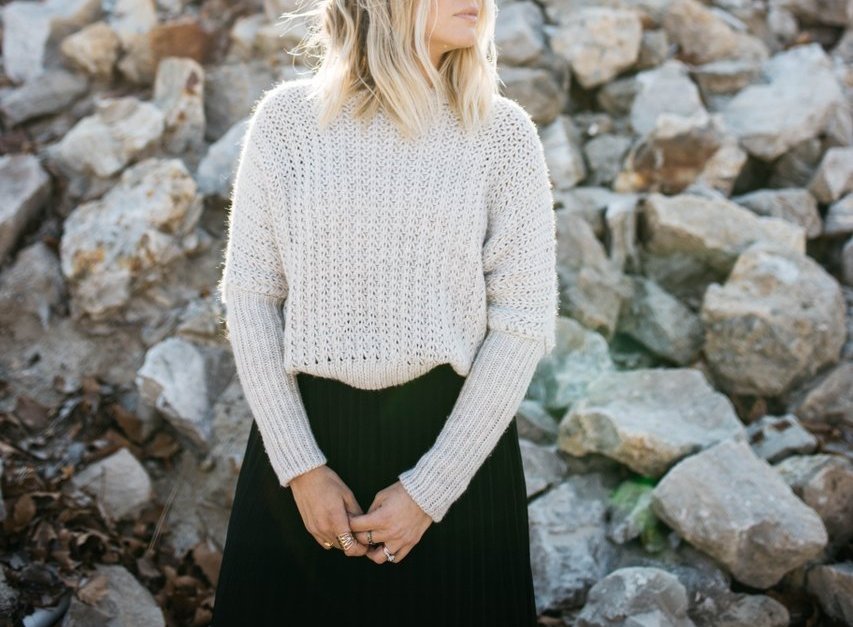
The most versatile layering piece—a knit sweater—is a wardrobe staple for both men and women. For an adaptable look, select neutral hues such as black or ivory in a ribbed texture. You can wear the sweater as is, or pair it with a leather jacket or wool coat on cooler days.
Despite its luxurious feel, cashmere is a natural fiber that can be both wet washed and dry cleaned. To take care of your sweater at home, hand wash in cool water with a gentle laundry soap. Avoid hang drying it, which can stretch out the material when it's wet. Instead, flat dry on a mesh rack. It also doesn't hurt to show your knit pieces a little TLC by bringing them to a professional cleaning service at the end of the season. That will take care of any odors or stubborn stains before you store them in linen bins lined with acid-free tissue—the tissue will prevent any dust or dampness from reaching your clothing so your sweater will still look great the next time you need it.
Bottoms: tailored trousers

It's all about that base to anchor your autumnal look. For women, the wide-legged pants are fall's de rigueur silhouette, ideally in a high-waisted cut. This wardrobe staple—appropriate for both work days and weekends—pairs well with a ribbed cashmere turtleneck that's tucked in for a polished look. Many pants are made of synthetic materials such as polyester blends, which are machine-wash friendly. In most cases, you can use warm water, but double check the label for the exact cleaning instructions.
Discerning gentlemen know that when it comes to pants—whether it's an everyday corduroy or wool trousers—fit is everything. A pair of well tailored pants can elevate your whole ensemble. If your store-bought pair runs a little large or small, consider getting them altered for a bespoke look. A style hack is to make sure the front pleats are always well-pressed by using a travel steamer or visiting your trusted cleaner. To store your pants, use a wooden or padded hanger that won't bend under the weight. Wrapping the legs over the hanger will ensure your trousers remain wrinkle-free.
Outerwear: architectural coats

Stay effortlessly chic by investing in key outerwear pieces to build your seasonal wardrobe. Men and women can look to architectural coats as a classic finishing touch. Wool blends provide both structure and warmth for every occasion this fall. Select a style that's lined for extra insulation—details such as lapels add polish, while a pop of color is a modern way to wear this cool weather staple.
Caring for this investment piece doesn't always require an involved process. Refer to the label for fabric info and clothing care instructions. When it comes to fragile fibers like wool, a professional cleaner can help maintain your coat's texture and longevity since wool does not mix well with water. For more advice about cleaning and storage, consult our guide to caring for outerwear.
While shopping for your autumnal essentials, keep in mind that quality cuts and fabrics last longer than seasonal trends. With our expert care tips, you'll always be well-dressed no matter what the weather is like.
Photos: Masson / Shutterstock.com, Brooke Cagle, Leeroy, Victoria_Fox / Shutterstock.com

Learn how to properly protect your favorites shoes during the fall.
Good shoes take you to good places—but what happens when your new pair is ruined by bad weather? It's a problem we face all too often. Once you've found footwear you love, you want to make sure it lasts. Whether you've invested in formal work shoes that you'd like to wear for years, or are emotionally attached to a new pair of kicks, you can keep putting your best foot forward with our fuss-free guide to shoe care.
Weatherproofing: use protectant against the elements

Your fall footwear collection likely includes a pair of black leather shoes or cognac boots. The most important step of caring for leather shoes is to weatherproof them before you wear them outside. Gently wipe the shoes with a soft cloth to remove any dust, then lightly spray them with a leather protectant to make sure your kicks are prepared for all kinds of autumnal weather. This will also ward off future dirt stains. Don't forget to do a simple spot test by applying the product onto a small area to gauge how the leather reacts. If you don't see any discoloration, proceed to spray the rest of the shoe.
When you think of shoes that require weatherproofing, leather boots, brogues and other formal styles immediately come to mind. As street style bloggers have proven, leather shouldn't be reserved for upscale styles—it can also make sneakers look effortlessly cool. Use the same protectant spray to keep your new leather sneakers looking pristine, as you start to experiment with this latest trend.
Cleaning: DIY solutions
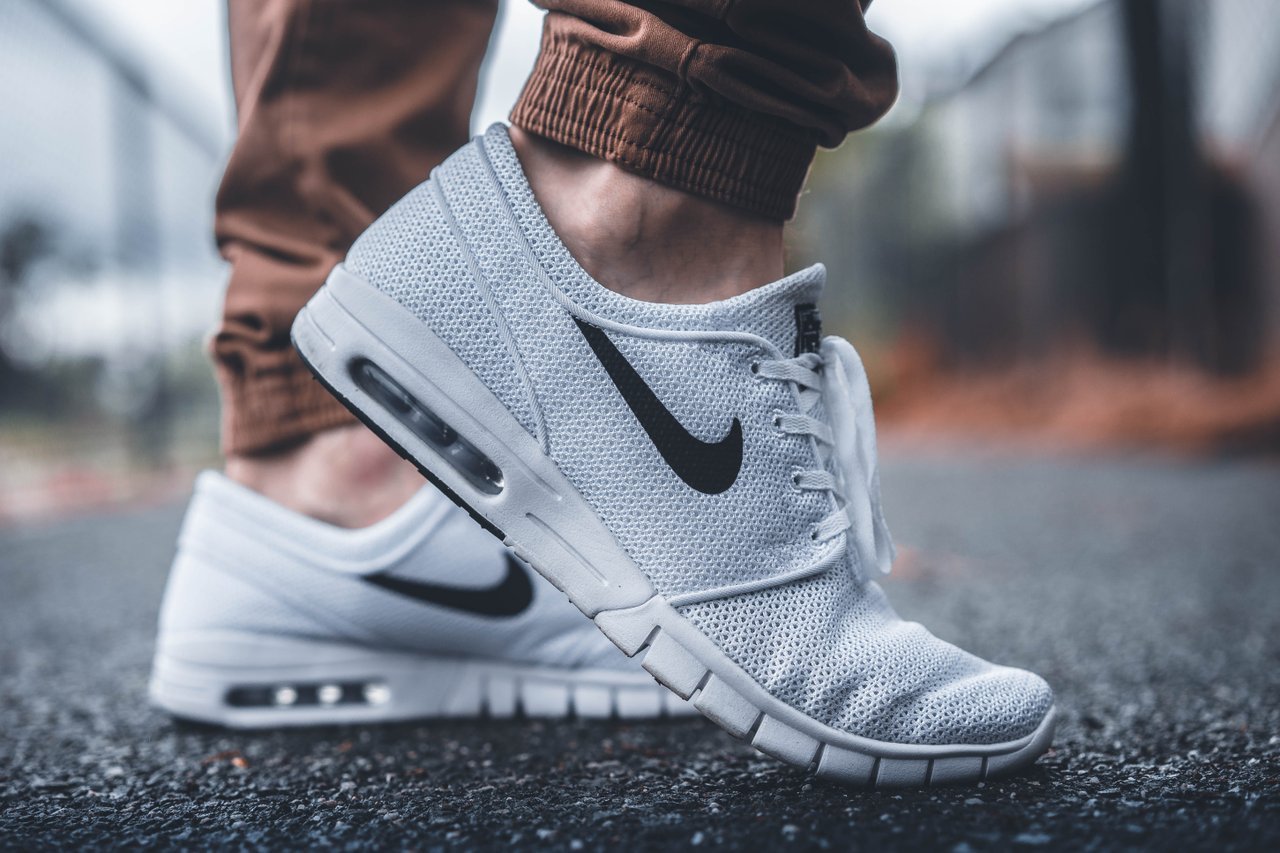
Leather shoes: Wipe off any dirt with a clean, dry cloth. Then use a damp cloth or sponge to gently clean the shoes, but avoid getting the leather too wet by doing a spot test first. For more details, our care guide for all things leather has got you covered.
Sneakers: If you spot a stain, lightly scrub your shoes with an old toothbrush, using a cleaning solution of warm water and a dash of dishwashing soap. The laces can be soaked in some warm water and gentle soap, and hung to dry. Before you know it, your kicks will be as good as new.
Rainboots: During the autumnal months, rubber rain boots will start making an appearance. While they seem easy to clean—rain should do the trick, right?—these boots actually require some basic care effort. Wipe them down with a clean cloth dipped in lukewarm water and dish soap to preserve the material. A scrub brush and water will help keep the soles clean.
Storage: keep your shoes cool and dry

While we don't all own walk-in shoe closets, we can still make sure our footwear is stored properly to avoid any scratches or discoloration.
- A cool, dry location can better preserve certain materials such as leather. Avoid direct sunlight, which can lead to faded colors or cracks in the fabric.
- Use shoe trees to preserve the shape of your footwear.
- Save your shoe boxes and keep your most polished pieces lined with acid-free tissue in the dust bag included with purchase. This is especially helpful for delicate materials such as suede, or heels with embellishments such as studs or rhinestones. Avoid plastic bags, which can dry out leather.
- Attach a Polaroid to each shoe box, so you can easily see what's in each box without lifting the lid.
Invest in a seasonal reheel
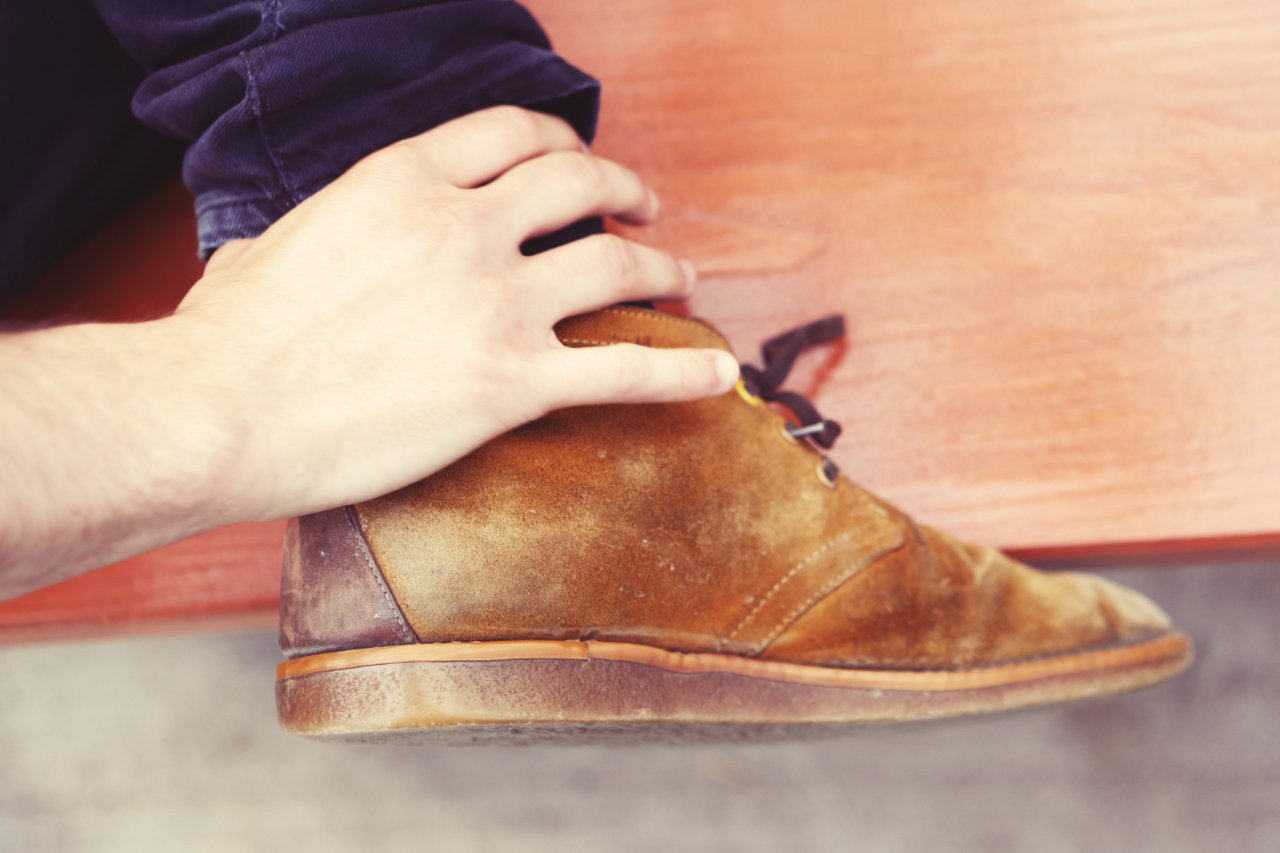
You've spent a considerable amount of time and effort searching for the perfect pair of shoes. Add value to your footwear by committing to a seasonal reheel to keep them in mint condition. A well-kept industry secret: most modern cleaners provide a full menu of clothing and accessory care options. Ask if your trusted dry cleaner provides a shoe care/repair service to take care of all your clothing needs this season.
By following these shoe hacks, you'll make preserving your fall footwear a streamlined process—so you can sit back and enjoy your americano with ease.
Photos: Ondrej Supitar, Kaique Rocha, Caio Resende, Joseph Barrientos, Leeroy, Xavier Teo

We've all been there. You're getting ready to head out for a night on the town with friends when you spill your wine on your perfectly coordinated outfit. At this point, there's no going back; there's no way you have enough time to pull together another outfit as good as the one you've already spent an hour analyzing in the mirror.
Left with no option, you implement the 5 minute make-shift stain removal process: Add water, rub, then use a blow dryer or any other air-blowing device to dry the spill zone just in time to run out the door. As it turns out, these are some of the worst things you can do if you have any intention of wearing that outfit outside of the dim and forgiving lights of the bar-scene.
Luckily enough for the spill-prone among us, Rinse's co-founder, James Joun, grew up in the Dry Cleaning business and has laid out 6 Do's and Don'ts in case you spill your favorite wine on your clothes.
1. Blot. Don’t rub.
Blotting the spill zone is an essential first step to treating your wine stain. While the immediate reaction may always be to rub the stain, James points out that it’s important NOT to do so since it can actually cause the stain to spread and permanently damage or alter delicate fabrics.
2. Water is your ally
Since wine is a water-soluble stain, a good thing to do is to use room-temperature water to tackle the spill zone. James suggests using a wet cloth and blotting around the edge of the stain first to prevent further spreading.
3. Don’t wait
While it can be hard to face the reality that you just stained your favorite white top, crying over spilled wine can actually make it worse. The longer you wait to treat the stain the harder it becomes to remove since it can get deeply embedded into the fibers of the garment.
4. Step away from the blow dryer
It turns out that using your blow dryer or heater on the stain can do more harm than good. For the best chance of restoring your garment, keep it away from sunlight and heat since both can accelerate the setting of the stain.
5. Don’t try to be a super-hero
Given the unpredictable nature of garment materials and dye strength, using a home-brewed solution for the wine stain can be a hit or miss experience. Unless you’re 100% positive that a household soap has a neutral pH, it can react unpredictably to the stain and garment.
6. When all else fails, leave it to the experts
While the steps above are great for preventing the stain from worsening, your best chance at restoring the garment would be to leave it to clothing care specialists. At Rinse, we always examine and apply best practices for removing stains and maintaining the integrity of the garment.
To learn more and schedule a Rinse, visit rinse.com.
Topics
Rinse Drop
We offer pickup and delivery if you can’t be present between 8pm and 10pm.
Our Valet will pick up or deliver your order to your doorstep or concierge, at which point you’ll receive a text with a photo showing where your items were left.
You can enable Rinse Drop on any (or all) of your orders.




